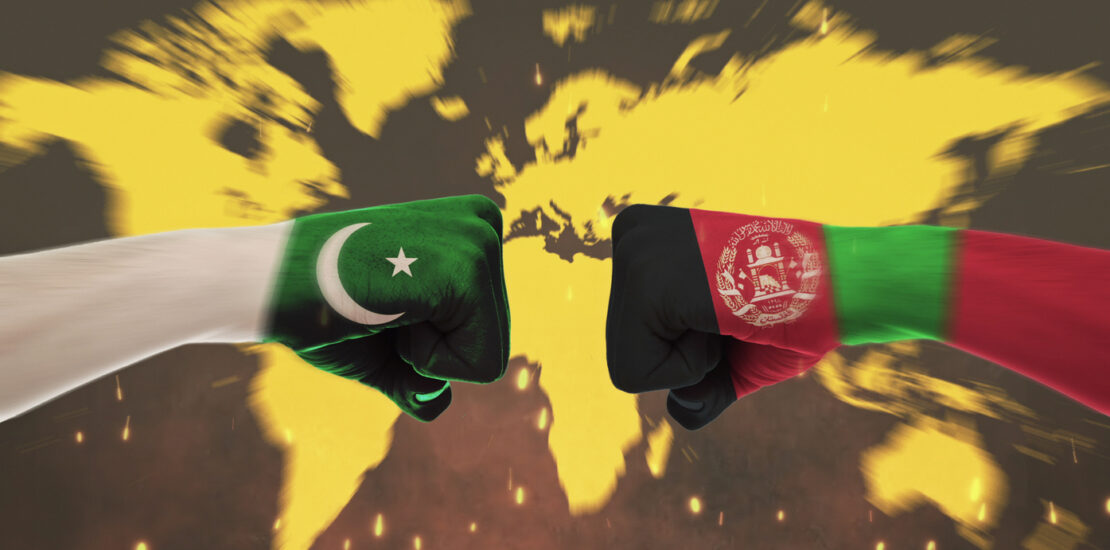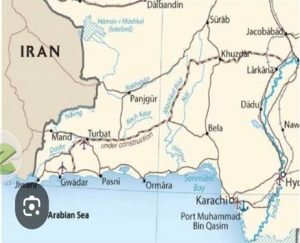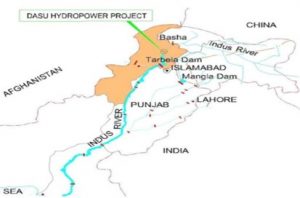PAKISTAN- CLASHES ON WESTERN BORDER AND TERRORISM INFERNO WITHIN
- April 26, 2024
- Posted by: admin
- Category: Pakistan

Lt Gen K J Singh (Retd)
Pakistan already battling grave and debilitating fiscal emergency is now getting mired in internal chaos and escalating tension on her Western border. Military-establishment has been utilising Eastern border with India to prosecute its diabolic K-2 (Kashmir and Khalistan) agenda coupled with deadly drug and drone combo. It has been leveraged as a tool to mislead and rally Awaam (populace), ensuring liberal funding and unbridled control in management of security policy. Deep state has touted “strategic depth” dream, with Afghanistan as surrogate/puppet state. It has also claimed peace and tranquility with “ummah (Islamic brotherhood)” states on Eastern border, in contrast to Western one, with India. The much-cherished dreams are in tatters with repeated skirmishes, aerial attacks and artillery duels with both Afghanistan and Iran. Most importantly, Pak is known for terrorist breeding madrasas and treating them as “strategic assets”, primed to be vectored against others. Hillary Clinton in her famous warning to Khaki Generals had warned them that “Snakes in your backyard, will not just bite the neighbours”. Ironically, it is now battling them with-in. Coupled with border clashes are- escalating Baluchi and Pashtun secessionist movements and raging inferno of terrorist attacks.
Af-Pak Border
Durand Line, negotiated in 1893, after 2nd Anglo-Afghan war between defines the border. It was negotiated between Mortimer Durand, British bureaucrat and Afghan Emir, Abdur Rehman Khan. The border traverses treacherous, mountainous terrain and unilaterally divides tribal homeland of Pashtun tribes like Mehsuds, Afridis and others. This line has never been recognized by tribal bodies (Shuras) and even governments in Kabul. Hamid Karzai asserted that Afghans will never recognize it. Aimal Faizi, spokesman for the President, stated in October 2012 that the Durand Line is “an issue of historical importance for Afghanistan. The Afghan people, not the government, can take a final decision on it.” Pakistani attempts of fencing it have met with fierce opposition. Notwithstanding resistance, Pak claims to have completed it with just 50 odd km remaining. It is also seeking to reinforce it with ditches and berms as also create 338 crossing points. Notwithstanding these endeavours’, its efficacy is highly suspect. This border has witnessed uneasy peace disrupted by artillery duels, aerial strikes and cross border raids. After negotiations, there have been no aerial strikes for two years, since April 22.

(Map Credit- National Geographic Maps)
The recent heightened tension was triggered by massive truck bomb attack on March 16 on Mir-Ali Border-post in North Waziristan by six fedayeens. It accounted for Lt Col (probably CO), Capt and five Frontier Corps (FC) soldiers. Relatively obscure group, Jaish-e-Fursan-e-Muhammad, with links to Tehrik-i-Taliban (TTP) claimed responsibility. Pak authorities blamed Hafiz Gul-Bahadur faction and retaliated, on 18 Mar with aerial strikes in two adjoining provinces of Paktika and Khost. Afghan authorities severely criticized violation of territorial sovereignty and killing of eight women and children. However, ISPR claimed that perpetrator of attack, Sehra alias Janan was eliminated. Afghan Government responded with retaliatory Mortar strikes on Pak border posts, killing and injuring more civilians. On March 23, troop convoy in Dera Ismail Khan was subjected to another fedayeen attack, killing two and injuring 22 soldiers.
Pakistan blames Afghan Government for providing sanctuary and freedom to Tehrik-i-Taliban Pakistan (TTP), ISIS-K to target Pakistani targets. As per Security analysts, last year (2023), there were as many as 789 attacks, accounting for 1,524 casualties with Security Forces, bearing the major share of brunt. Pakistan has sought to deal with terrorism by multi-pronged approach. This includes ruthless counter-terrorism operations like Raad-ul-Fassad, characterized by disproportionate use of force and heavy calibre weapons like gun-ships, tanks and artillery. Fencing of Durand Line, border closure and pressure on Afghan Government are other measures applied. The most unpopular measure has been directive on 01 Nov 2023 to expel Afghan refugees, numbering approximately 1.7 million. They were identified as undocumented refugees, after preliminary screening of 3.8 million populace of Afghan origin. Sanitization drive in Karachi and around security establishment pockets like Malir Cantt and Mehran air-base revealed collaboration by refugees in terrorist attacks. Approximately, 4 lakhs have already been driven out, including 80% women and children. This ongoing exercise portends to drive permanent wedge between two ethnicities.
Pak-Iran Border
Pakistan has 909 km long border with Iran, decided in colonial era, spanning hilly and rugged terrain and sparsely populated areas from Taftan to Mand. Iran is building an elaborate barrier system with 3 ft (91.4 cm) thick and 10 ft (3.05 m) high concrete wall, fortified with steel rods, reinforced with ditches and embankments. Concurrently, Pak has also fenced 80% of border on her side. This border divides Baluchi (Sunni) tribal population, on both sides- Sistan in Shia dominated Iran and Baluchistan, traditionally neglected by Punjabi dominated Pakistan. Both provinces have festering secessionist movements demanding unified, Baluchi homeland.

(Map Credit- Wikipedia maps)
The uneasy peace on border was broken, when Iran launched missile and drone strikes on 16th Jan in Kohe-Sabz area. It targeted Jaish-al-Adl group (repackaged version of Jundallah), holding it responsible for killing of 11 Iranian Police personnel in Sistan province, in Dec 2023. Pak retaliated, two days later with multiple drones strikes in Sistan. Unfortunately, both attacks accounted for dozen odd civilian casualties, including women and children. Eleven days later, nine Pak workers perished in another terrorist attack in bordering town in Sistan. Attacks were part of Iranian attacks on targets in Kurd areas and Syria. Viewed in context of ongoing Gaza imbroglio and Houthi raids, the specter of widening arc of conflict in Middle East was very real. The attacks were fueled by mutual suspicion and Iranian apprehensions of US using Pak to unsettle her. It required flurry of visits by diplomats supplemented by brokering by Chinese minister to restore uneasy and fragile sanity on border. Stakes for China for de-escalation are indeed high with Chinese companies engaged in Gwadar and Saindak Copper and Gold mining projects in NW Baluchistan.
Ramzan and Mayhem Cycle
Sanctity and traditional peace of holy month of Ramzan in Pakistan has been bloodied by relentless terrorist attacks. Recently, elected President Asif Zardari and Gen Aseem Munir, Army Chief attended the funeral of Frontier Corps Lt Col, killed in terrorist attack and vowed revenge. The new government, cobbled after Feb election and considerable manipulation is under intense pressure to show results.
Mayhem cycle stretching for ten days (from 16th to 26th Mar), included five different attacks, three in Khyber Pakhtunkhwa (KP) province and two in Baluchistan, resulting in the deaths of at least 18 people. All five attacks were fedayeen (suicide) bombings. 12 military personnel, five Chinese nationals and few Afghans and Pak civilians were collateral casualties. Baluchistan Liberation Army (BLA) claimed responsibility for attacks in Baluchistan. Some obscure splinter groups claimed orchestration of two attacks in KP. Nobody has owned-up for attack on Chinese engineers.
China Pak Economic Corridor (CPEC)- New Fault-line
On March 24, eight fedayeens of BLA tried to storm Gwadar port complex. While the attack was thwarted, there were conflicting claims on casualties and damages. Pak acknowledge losing two security personnel and eliminating all attackers. In vicinity and two days later, four fedayeens of Majeed Brigade targeted, second largest Naval aviation base, PNS Siddique at Turbat on March 26. Amongst conflicting claims, authorities claimed elimination of all fedayeens and losing only one Frontier Corps personnel. Turbat base is strategically located 150 odd km North of Gwadar and also supports Pak Naval bases of Jiwani and Pasni, both in close proximity (100 km on either side of Gwadar).

(Map Credit- Research Gate)

The most significant attack happened on March 25 at Besham, near upcoming Dasu dam, on Indus River in Kohistan (KP), killing five Chinese engineers and Pak civilian bus driver. The attack reminded of Jul 21 incident, wherein nine Chinese engineers were killed in similar attack. TTP has denied any role in attack and there is much speculation on possibility of involvement of ISIS-K, Tehrik-e-Jihad- Pakistan (TJP), East Turkmenistan Independence Movement (ETIM) or unidentified groups. Chinese assets on CPEC have literally opened new array of high-profile targets and internal fault-line for terrorist tanzeems. Karachi stock-exchange, Chinese Consulate, Confucius Centre have all been targeted. After recent attacks, Chinese companies (with approximately 2,000 Chinese workforce) have suspended work on not only Dasu (4,320 mw) but also Dimer-Basha (4,800 mw) and Tarbela extension (1,400 mw) projects. Work is going on, only on Mohmand dam (740 mw). Work was stalled for nearly two years after last attack and could be resumed only on payment of hefty compensation of 30 million dollars. Pakistan has raised two specialized divisions, funded out of CPEC funds, yet attacks continue unabated, exposing vulnerability of CPEC, due to fragile internal security environment and more importantly, lack of acceptance by Awaam.
(Map Credit-Research Gate)
Uneasy and Bleak Future
Despite desire to designate Pakistan as a failed or failing state, it’s geo-strategic location and large young population, still helps her to retain relevance. The recent communication and assurances by US President Joe Biden to PM Shahbaz Sharif reinforce this inference. The challenge for Pak policy makers and her international facilitators is to undertake meaningful and holistic reforms instead of cosmetic, quick-fix measures. Genuine reforms like dismantling milt-establishment, terrorist infrastructure, accommodation of genuine Baluchi and Pashtun regional aspirations are long overdue. For Pakistani Awaam (populace), Robert Frost’s poem, is most relevant, albeit rephrased (with due apologies), as- “Woods infested with Tanzeems, are indeed dark and deep, And miles to march, Khaki back to barracks, before we sleep.”

Lt Gen K J Singh (Retd)
AUTHOR
Lt Gen KJ Singh, PVSM, AVSM & Bar, is former Western Army Commander and is currently the State Information Commissioner. He holds Maharaja Ranjit Singh Chair in Panjab University. He has had a stint as Advisor to CM and is a member of UT Advisory Council.
